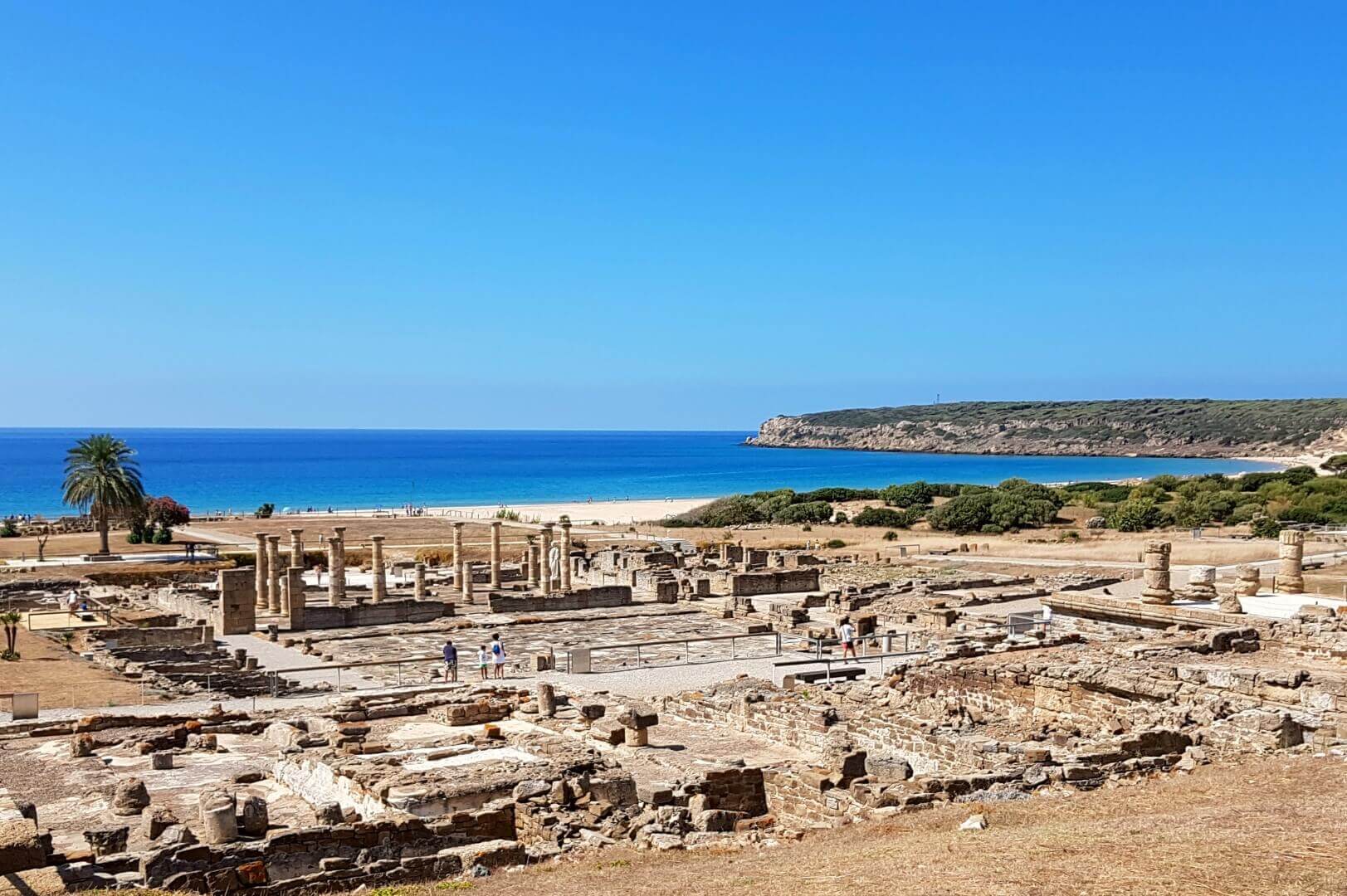
Baelo Claudia is an ancient Roman city located on the southwest coast of Spain. It was founded in the 2nd century BC and served as a prosperous center of trade and commerce during the Roman Empire. Today, it stands as an impressive archaeological site, offering a fascinating glimpse into the ancient world.
In this article, we will explore 19 mind-blowing facts about Baelo Claudia that highlight the city’s rich history and significance. From its strategic location to its architectural marvels, this extraordinary site provides valuable insights into the Roman civilization and its impact on the region.
So, get ready to delve into the intriguing world of Baelo Claudia and discover some remarkable facts that make it a must-visit destination for history enthusiasts and travelers alike.
Key Takeaways:
- Baelo Claudia was a thriving Roman city in Spain, known for its fish-salting industry, stunning ruins, and role in producing the famous Roman fish sauce, garum. It was destroyed by an earthquake in the 4th century AD.
- Baelo Claudia, a UNESCO World Heritage Site, offers visitors a glimpse into ancient Roman civilization with its well-preserved ruins, including a theater, a basilica, and an aqueduct. It was also depicted on the Spanish 100 pesetas banknote.
Baelo Claudia was a thriving Roman city on the southern coast of Spain.
Baelo Claudia, located in present-day Tarifa, Cadiz, was once a bustling city that served as an important trading hub in the region.
The city was established in the 2nd century BC.
Baelo Claudia was founded by the Romans during their conquest of the Iberian Peninsula, around 200 BC.
It was named after Emperor Claudius.
The city was named in honor of Emperor Claudius, who granted it the status of a municipium.
Baelo Claudia was known for its thriving fish-salting industry.
The city’s strategic location near the Strait of Gibraltar made it an ideal place for fish-salting, a lucrative business during ancient times.
The ruins of Baelo Claudia showcase impressive Roman architecture.
Visitors to Baelo Claudia can marvel at the well-preserved ruins, including a theater, a basilica, and an aqueduct.
The city had a population of around 3,000 inhabitants.
At its peak, Baelo Claudia had a modest population of approximately 3,000 residents.
Baelo Claudia was an important center for the worship of the goddess Juno.
The city was home to a magnificent, temple dedicated to Juno, the Roman goddess of marriage and childbirth.
The archaeological site of Baelo Claudia was rediscovered in the early 20th century.
After centuries of being buried beneath the sands, the ruins of Baelo Claudia were rediscovered and excavated in the early 20th century.
The site offers stunning views of the Atlantic Ocean.
Situated on a picturesque coastal location, Baelo Claudia provides breathtaking views of the Atlantic Ocean.
Baelo Claudia was a center for the production of the renowned Roman fish sauce, garum.
Garum, a fish sauce made from fermented fish intestines, was a highly prized condiment in ancient Rome, and Baelo Claudia played a significant role in its production.
The city was strategically located near the Strait of Gibraltar.
Baelo Claudia’s proximity to the Strait of Gibraltar made it a vital trading port between the Mediterranean Sea and the Atlantic Ocean.
Baelo Claudia was a free city within the Roman Empire.
The citizens of Baelo Claudia enjoyed certain privileges and autonomy as a free city within the Roman Empire.
The city’s economy relied heavily on agriculture, in addition to fishing and trade.
Baelo Claudia benefited from fertile lands surrounding the city, where crops such as wheat, olives, and grapes were cultivated.
Baelo Claudia was destroyed by a powerful earthquake in the 4th century AD.
A devastating earthquake in the 4th century AD caused widespread destruction in Baelo Claudia, leading to the decline and eventual abandonment of the city.
The ruins of Baelo Claudia have provided valuable insights into Roman urban planning.
Archaeologists have studied the layout of the city and its buildings, shedding light on Roman urban planning and architecture.
Baelo Claudia is now a popular tourist attraction.
Visitors from around the world flock to Baelo Claudia to explore its ancient ruins and learn about the rich history of the Roman city.
The city was depicted on the Spanish 100 pesetas banknote.
Baelo Claudia’s significance is recognized by its depiction on the Spanish 100 pesetas banknote, emphasizing its historical importance.
Baelo Claudia is a designated UNESCO World Heritage Site.
In recognition of its outstanding universal value, Baelo Claudia was inscribed as a UNESCO World Heritage Site in 1988.
Baelo Claudia is an archaeological treasure waiting to be explored.
With its rich history, stunning ruins, and cultural significance, Baelo Claudia offers visitors a glimpse into the fascinating world of ancient Roman civilization.
Conclusion
In conclusion, Baelo Claudia is a truly remarkable ancient Roman city that holds many fascinating secrets and stories. From its stunning architecture to its bustling trade and cultural activities, Baelo Claudia offers a unique glimpse into the past. The city’s location by the sea and its strategic importance in the Roman Empire make it a must-visit destination for history buffs and archaeology enthusiasts. Whether you’re exploring the well-preserved ruins or marveling at the intricate mosaics, Baelo Claudia never fails to impress.
FAQs
Q: How old is Baelo Claudia?
A: Baelo Claudia was founded in the 2nd century BC, making it over two thousand years old.
Q: Can visitors enter the archaeological site of Baelo Claudia?
A: Yes, visitors can enter the site and explore the ancient ruins of Baelo Claudia. There is an entrance fee, and guided tours are available for a more informative experience.
Q: Are there any amenities available at Baelo Claudia?
A: Yes, there are facilities such as toilets and a visitor center at Baelo Claudia. However, it is advisable to bring your own food and water as there are limited options available on-site.
Q: What time of the year is best to visit Baelo Claudia?
A: The best time to visit Baelo Claudia is during the spring and autumn seasons when the weather is pleasant and the site is less crowded. Avoiding the peak summer months can help you enjoy a more comfortable visit.
Q: Can I take photographs inside Baelo Claudia?
A: Yes, photography is allowed inside Baelo Claudia for personal use. However, drones and professional equipment may require special permission.
Baelo Claudia's fascinating history is just one example of the captivating stories waiting to be discovered. If you're intrigued by the rise and fall of empires, delve into the gripping tale of the Roman Empire's decline. For those enchanted by Spain's rich heritage, explore the vibrant region of Andalusia and its hidden gems. And if ancient civilizations pique your curiosity, embark on a journey through Egypt's awe-inspiring past, where pharaohs ruled and pyramids towered. Each destination holds a treasure trove of secrets, inviting you to uncover the extraordinary stories that have shaped our world.
Was this page helpful?
Our commitment to delivering trustworthy and engaging content is at the heart of what we do. Each fact on our site is contributed by real users like you, bringing a wealth of diverse insights and information. To ensure the highest standards of accuracy and reliability, our dedicated editors meticulously review each submission. This process guarantees that the facts we share are not only fascinating but also credible. Trust in our commitment to quality and authenticity as you explore and learn with us.


